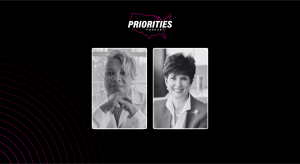Census data, NextGen 911, drones hot issues at 2018 MidAmerica GIS symposium

For geographic information systems (GIS) practitioners looking for new ideas and ways to collaborate, the MidAmerica GIS Consortium (MAGIC) has announced its 2018 symposium marking the network’s 30th anniversary.
Set for April 23-26 in Omaha, Nebraska, the 2018 conference is described by the group as a way for geospatial professionals in both the private and public sector to “learn from the best” and take on emerging challenges in mapmaking, location services and data development during a time when the digital technology is being adopted by more organizations than ever.
The symposium’s focus evolves with the times, said Tony Spicci, MAGIC’s director at large and GIS supervisor for the Missouri Department of Conservation, and this year there will be courses focused on current issues like Next Generation 911, the Local Update of Census Address Operation (LUCA), and the increased use of drones and light detection and ranging (LiDAR) data.
With the approach of the 2020 census, geospatial data practitioners are reminded of how much has changed in the past decade, in regard to their roles in the count and with respect to the related technologies and practices.
“[LUCA is] a great example of how you see all these different things stitched together — state, local, federal — and how you see mutual benefits of working together on a single set of data to all parties affected,” Spicci said, referencing some of the policy work done by the National States Geographic Information Council and the National Geospatial Advisory Committee.
Every 10 years, the U.S. Census Bureau leans on the most recent technological developments to reinvent how it conducts the census, Spicci said. Ensuring accurate counts was one of the reasons MAGIC was formed 30 years ago, he said, so it’s fitting that it’s again looking for ways to coordinate across jurisdictions to ensure everyone’s data is matching up.
A consortium of 161 mayors wrote a letter to U.S. Commerce Secretary Wilbur Ross this week citing concerns with how the census is being managed and funded. Localities that undercount their populations risk losing $2,000 per citizen not counted, and so far, the Brookings Institution estimates that the 2020 census is on track to be “wildly” inaccurate.
The use of GIS is going to make a big difference with how the census is conducted this year and ensuring data accuracy, said Susan Norton, communications director for the City of Fayetteville, Arkansas, and a member of MAGIC’s steering committee.
“There’s so much of the work that happens locally that rolls up into the national spatial data infrastructure,” Norton said. “That’s where the census is just one of those applications at the federal level that will make use of all of this locally-defined data.”
Other courses now booked on the symposium schedule include those themed around legal issues in GIS, GIS workflow, data processing, and courses on how to conduct geoprocessing using programming languages like R and Python.
One of the best things about MAGIC’s symposiums, Norton said, is that people from different disciplines come together and discover that they have peers in GIS they weren’t even aware of.
“Because we’re talking about people not only in data development but people who are data consumers and who build applications and visualizations and management techniques,” Norton said. “People come away with their eyes opened and want to come back the next time.”
MAGIC represents practitioners across the private and public sectors in the following nine states:
- Arkansas
- Nebraska
- Illinois
- North Dakota
- Iowa
- Oklahoma
- Kansas
- South Dakota
- Missouri
More information on the network’s 2018 symposium can be found on MAGIC’s website, here.



